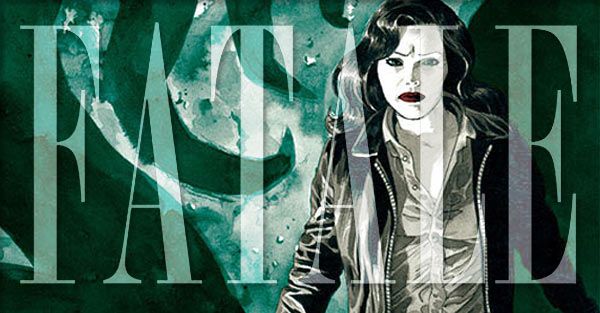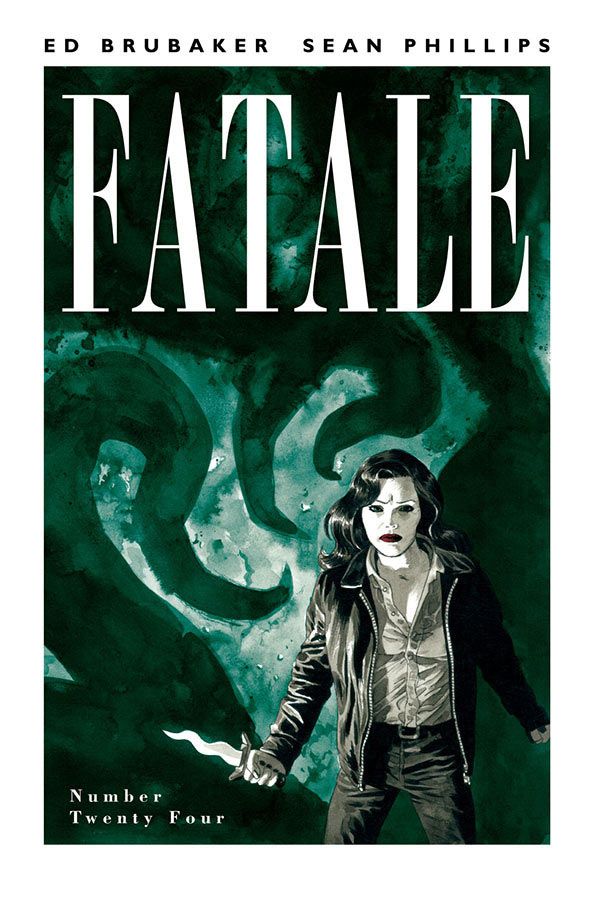Writer Ed Brubaker and artist Sean Phillips have been partners in crime for about 15 years.
That wasn't part of the plan, but ambition and originality have kept them making comics together, and at the Toronto Comic Arts Festival, their long and productive relationship was put on display during the pair's spotlight panel.
Together, Brubaker and Philips have created "Sleeper," and "Fatale," and are set to release "The Fade Out" later this year.
Moderator Heidi MacDonald headed up the panel, discussing the award-winning duo's history and habits over the last decade and a half, opening by asking whether the two fell in love at first sight or landed into an arranged marriage. Brubaker broke out laughing, as Phillips nodded and replied, "It was arranged."
Brubaker quickly disagreed, stating, "I feel like there was an early email where you acknowledged that you'd read some of my comics and you were excited to work with me."
"Perhaps," Philips responded after a short pause for consideration. "But it was back in the days [before email!]"
Phillips first worked with Brubaker in 1998, after reading the writer's semi-autobiographical comic "Lowlife." He was an inker on "Scene of the Crime," a four-issue noir story set in San Francisco. Yet, it wasn't 2003 that they began collaborating on big projects. Although they had teamed up for DC Comic's "Batman: Gotham Noir," "Sleeper" was the first comic Brubaker specifically wrote for Phillips.
"I loved the way [Sean] drew in general, but his comics had this spontaneity and life to them," Brubaker explained.
"Sleeper" played a big role in DC's WildStorm superhero universe, much to Brubaker's "eternal regret." Then, like now, he was tired of superhero comics, but he liked the first issue he'd written for a potential miniseries, and so did Jim Lee, who was then WildStorm's editorial director. When an editor called asking for a spin-off of an earlier WildStorm project, Brubaker pitched the miniseries as "Donnie Brasco the superhero."
"At that point, if someone offered to pay me to do something I created, and with an artist I wanted to work with, I didn't think too far ahead," Brubaker explained. Phillips sent in a character sketch of the neo-noir lead alongside Brubaker's one-paged pitch. DC Comics green-lit the series almost immediately.
In the comic, Phillips drew unconventional page layouts, often with a single super-panel in the background, and smaller panels cascading across the page. "That was something just to keep it interesting for me," Phillips said. Part of his inspiration was his general dislike of WildStorm comics that seemed to focus on being cool over functional, so he tested a new style on a Batman comic, and liked it enough to use it for the new series. The resulting miniseries was a critical hit and nominated for an Eisner Award.
It appears that the reason Brubaker and Phillips continue to work together well after "Sleeper" is that need to keep things interesting. Brubaker calls their relationship symbiotic; Phillips is always looking for unique projects, and Brubaker needs his artistic freedom. Plus, both men are self-admitted control freaks. Their relationship works despite the fact that they've only spoken on the phone a couple of times, and they haven't seen each other in five years, partially because Brubaker lives in Los Angeles, while Phillips lives in the United Kingdom.
Still, if Brubaker doesn't see an email from Phillips in a few days, "I worry he's been hit by a bus."
After "Sleeper," their next big project was published through Marvel Comics' Icon imprint in 2006. A straight crime story, "Criminal" follows the stories of two generations of lawbreakers.
"For me it was literally telling [Marvel publisher] Dan Buckley that I would go crazy if I couldn't do something that I owned and wasn't a superhero story," Brubaker said, though getting his way meant paying Phillips and their inker out of his own pocket.
By 2006, illustrating superhero comics had gotten stale for Philips. "There wasn't anything there for me anymore," the artist said. "I'm not really a superhero artist, and it's not something that I'm interested in. It's nice to do something I don't have to apologize for."
"Criminal," along with "Incognito," eventually shifted publishers to Image Comics, where the pair launched "Fatale" two years ago. Brubaker had been talking to horror author Joe Hill and was looking to create a neo-noir horror based on his irritation at lack of strong female characters in noir stories.
"Fatale" also offered Phillips the opportunity to once again try something new, art-wise. Gone were the cascading panels, replaced by a more conventional layout. "For my own sake, I wanted to change it up again," he said. Brubaker pointed out that their next issue deviates further, consisting mostly of double page spreads.
"Fatale" is only two issues away from completion, and Brubaker and Phillips recently signed a five-series deal with Image, giving them free rein to create whatever they like. First comes "The Fade Out," a noir comic set in early twentieth century Hollywood. Brubaker repeatedly called it epic in scope and the ultimate noir story, drawn from his relatives' experiences working in the film industry. "It's about stories my aunt used to tell be before she got too senile," Brubaker said. "I think it's the most ambitious thing we've ever done."
The pair has hired research assistants, and are building a photo database of Los Angeles during that era. Of course, there's also the matter of selling it. Brubaker has emails from Image Comics partner Robert Kirkman, asking him to stop calling it a noir.
"It's a sexy thriller," Brubaker said, chuckling.


